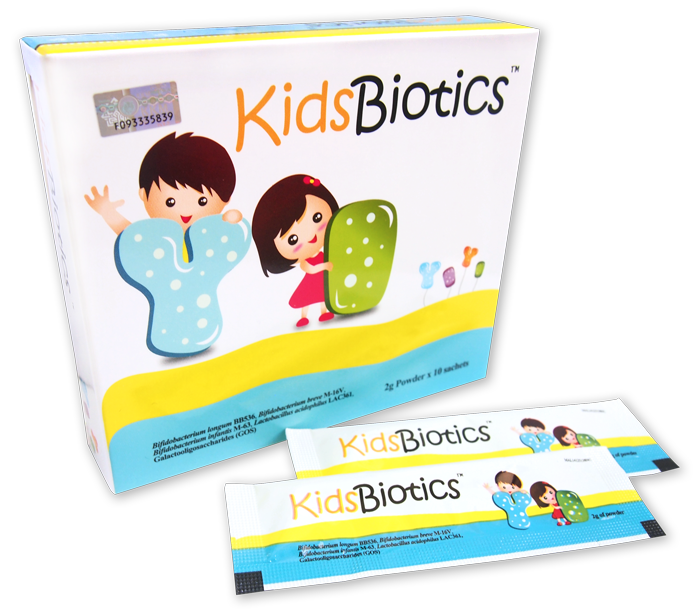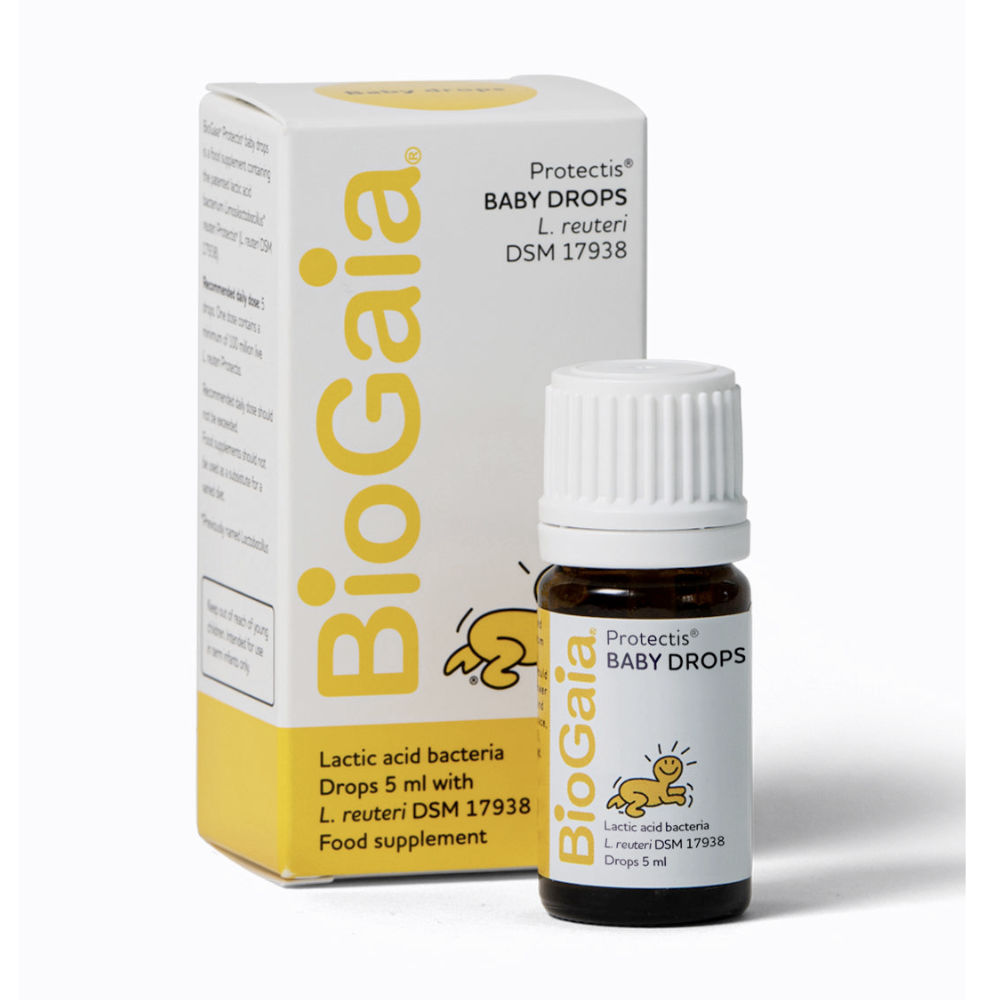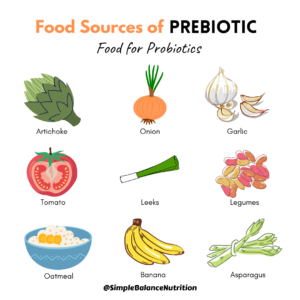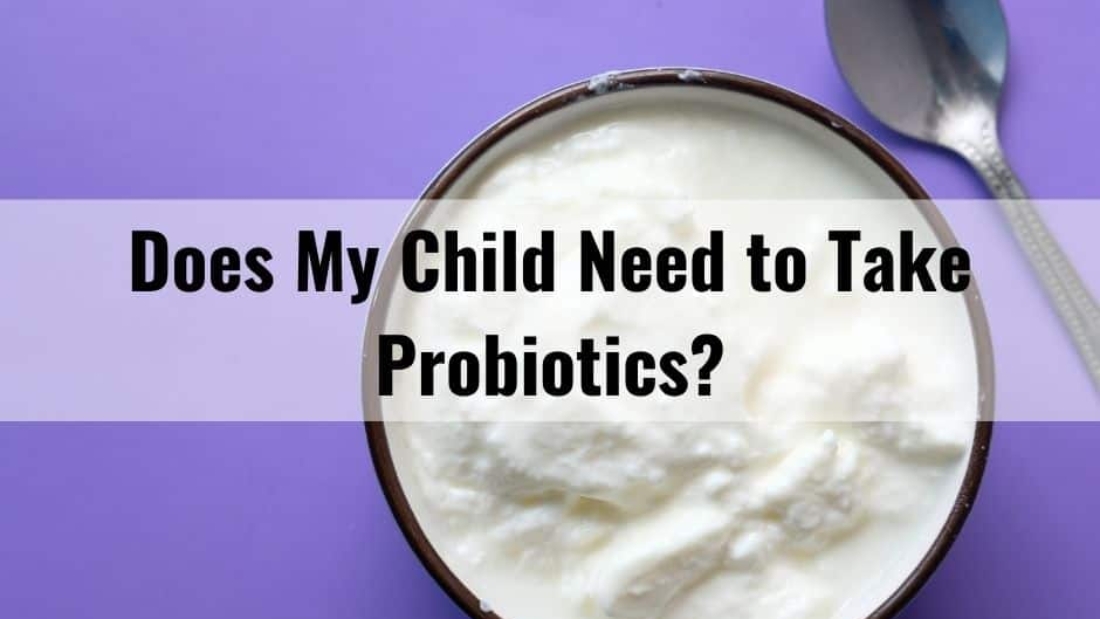You’ve heard that probiotics are important for good digestion and immune function. Does that mean you should supplement your kids? What strain will help provide the best support for your child’s digestive system and relieve their constipation? I dive into the latest research about probiotics and health and provide tips for choosing the right supplements for your children.
WHAT ARE PROBIOTICS?
Probiotics are a combination of live beneficial bacteria (and/or yeasts) that naturally live in our body. We have two kinds of bacteria constantly in and on our body — good bacteria and bad bacteria. Probiotics exist naturally in some foods and are also available as dietary supplements in powder, capsule, and tablet forms. The World Health Organization and the Food and Agriculture Organization of the United Nations call probiotics the “live microorganisms, which, when administered in adequate amounts, confer a health benefit on the host.”
So we hear that probiotics are good for us. But a lot of the information that you will find about probiotics is not all that useful and does not help us decide whether the probiotics found in food are good enough, or if we need supplements. And if we need supplements which strain of probiotic should we get? How much of a dosage do we need to see a benefit? How long to take it for? And what type of benefit can I expect?
THE PROBIOTIC STRAINS ARE KEY
There are many different species of probiotics, and many different strains within species. That means when we say “probiotics”, we are actually referring to many different types, not just one.

GENUS: A genus is a biological classification of living organisms. The term comes from the Latin genus meaning group. A genus contains one or more species. Examples of common probiotic genera include Bifidobacterium and Lactobacillus.
SPECIES: ‘Species’ refers to a type of microorganism existing within a genus or family. For example, acidophilus is the name of a species within the Lactobacillus genus.
STRAIN: A probiotic ‘strain’ is a genetic variant or subtype of a species. Different probiotic supplements contain different strains, which may be classified under the same species and genus. However, one acidophilus is not equal to another acidophilus. It’s the strain level that matters when you choose a probiotic in order to help with a specific health condition. If you neglect to pay attention to the specific strains in the kids probiotic, you may not be able to gain the health benefits you desire, and as such, be wasting your money.

In general, you’ll find many supplements will have a variety of Lactobacillus and Bifidobacterium species some limited to just one or two strains, others with several.

Bifidobacterium longum BB536;
Bifidobacterium breve M-16V;
Bifidobacterium infantis M63;
Lactobacillus acidophilus LAC 361;
Galacto-oligo saccharides (GOS)
THE NUMBERS OF THE PROBIOTIC STRAINS MATTER
Probiotics are measured in colony forming units (CFU), which indicate the number of viable cells. Amounts may be written on product labels as, for example, 1 x 109 for 1 billion CFU or 1 x 1010 for 10 billion CFU. Many probiotic supplements contain 1 to 10 billion CFU per dose, but some products contain up to 50 billion CFU or more. However, higher CFU counts do not necessarily improve the product’s health effects.
Manufactures should have storage conditions listed on the label. Stability testing is conducted under the same temperature as the recommended storage condition on the label. Because probiotics must be consumed alive to have health benefits and they can die during their shelf life, users should look for products labeled with the number of CFU at the end of the product’s shelf life (the expired date), not at the time of manufacture.
When choosing your child’s probiotic, considering the amount of each strain is important. Most research suggests the minimum quantity of bacteria needed to generate therapeutic effects is 1 x 109 for 1 billion CFU. So you need to think billions when selecting a supplement.
Some of the gummies and chewable probiotics targeted to kids or packaged probiotic foods like bars you’ll find in the supermarket, simply don’t have a high enough dosage to gain any health benefits.
For infants, the dosage should be 5-10 billion CFU per day. For children over the age of 2, the desired dosage should be 10-25 billion CFU per day.
CONSIDERING YOUR CHILD’S AGE IS IMPORTANT
An infant’s gut microbiome is very vulnerable and lacks diversity compared to adults. It’s estimated young babies have approximately 10 different species whereas an adult has over 1000 species. A baby’s microbiome born vaginally is predominantly made up of Bifidobacterium species verses an adult’s microbiome which is dominated by Lactobacillus species.
After the age of 2, the child’s gut microbiome composition resembles that of an adult and is much more stable.
As a result, you’ll want a probiotic supplement that contains a higher dosage of beneficial bacteria in children over the age of 2. And, you won’t necessarily need to be limited to just kids specific products and brands.
If you’re breastfeeding, you may also want to assess your own gut health as bacteria will be transferred from the intestines to your baby’s through your breastmilk.
WHEN YOUR CHILD NEED A PROBIOTIC SUPPLEMENT?
Antibiotic-Associated Diarrhea
Antibiotics can reduce the amount of friendly bacteria in the gut, both good and bad bacteria, which lowers the body’s defenses against other types of invaders, including bacteria, yeasts, fungi, and parasites. Taking probiotics containing Lactobaciallus rhamnosus GG and Saccharomyces boulardii may help to replace the bacteria lost as a result of antibiotic use and reduce the risk of antibiotic-associated diarrhea, which occurs in 40% of children on antibiotics (here, here).
Most probiotics should be taken after taking the antibiotics, so that they won’t be affected by the antibiotic.
Acute gastroenteritis (not related to antibiotic use)
Sometimes your child will just have diarrhea for a variety of reasons (most likely due to a viral or bacterial infection). Research has shown that there can be a reduction of stool frequency and duration of diarrhea experienced (by about 1 day) in children when probiotics containing Lactobacillus rhamnosus GG and Saccharomyces boulardii are taken (here).
Constipation
There is very limited evidence at this point, but some studies do show an increase in stool frequency with the use of probiotics. However, there is not good consensus on the dose or the type of probiotic (here).
Atopic Dermatitis / Eczema
Several studies and reviews have looked at the role of probiotics in preventing and treating atopic dermatitis. While some of the research has provided mixed reviews, many studies have found that infant at risk for developing eczema have benefited from taking probiotics with the Lactobacillus rhamnosus GG strain (here). Other beneficial strains include Bifidobacterium lactis UABLA-12 and Lactobacillus acidophilus DDS-1 (here)
And, the protective effect of probiotics may be strongest when given to pregnant mothers. Three studies using Lactobacillus rhamnosus GG given to pregnant women for 2-4 weeks before labour and continued treatment post-birth found significantly lower rates of eczema/atopic dermatitis during the first 2 years of life (here, here, here) so we probably want to make sure that moms are getting a good supply of these beneficial bacteria before baby is even born.
A New Zealand study was the first randomised controlled trial to show that Lactobacillus rhamnosus HN001 can be beneficial for childhood eczema. The key is to start supplementation with rhamnosus HN001 early from 35 weeks of pregnancy until two years of age (here).
The health benefits of rhamnosus HN001 include reduced risk of childhood eczema by 44% until the child’s 6th birthday and beyond. The protection continued even after supplementation was stopped by the child’s 2nd birthday. This confirms that not all probiotics are the same. Rhamnosus HN001 is also thought to reduce symptoms of postpartum depression in women.
Functional Gastrointestinal Disorders
A recent systematic review focused on probiotics and functional gastrointestinal disorders in children birth – 18 years yielded no studies on infants and young children (birth – 2 years old). While their search included studies on probiotics that reported on gastrointestinal outcomes such as abdominal pain, stool frequency, stool consistency and bloating/flatulence, these studies did not include infants and young children. Therefore, as evidence is not available for infants and young children, no probiotics can be recommended to improve functional gastrointestinal disorders for those 2 years and under at this time (here).
Infantile Colic
Colic is difficult to understand, and even more difficult to treat. As a parent who has lived through colic, I know and understand the desperation in trying to find a solution. Research shows that a specific bacterial strain called Lactobacillus reuteri 17938 has been associated with decreased crying spells in exclusively breastfed infants during the first three months of life (here, here, here, here. here, here).

Immune Health
As parents, we’re always looking for ways to reduce the number of colds and flus that find their way into our lives! Maintaining a healthy population of gut bacteria, along with a healthy diet and lifestyle may be key to staying healthy during cold and flu season. A recent meta-analysis of probiotic use (specifically Lactobacillus and Bifidobacterium strains) in children and adults revealed significantly fewer numbers of days of illness per person, shorter illness episodes by almost a day, and fewer numbers of days absent from day care/school/work (here).
WHAT TO LOOK FOR IN PROBIOTIC SUPPLEMENTS
If you’ve decided to buy a probiotic supplement for your kids, prepare yourself for a dizzying array of options. The particular brand you purchase doesn’t matter as much as a few key criteria, which I’ve outlined for you below:
- “Live, active cultures.” Make sure the supplement you choose contains this actual phrase right on the bottle, so you can be sure you’re getting an effective product. Some brands of probiotic supplements even come refrigerated to help protect these living cells.
- High bacteria count. The concentration of bacteria in probiotic supplements is measured in CFUs (that’s “colony forming units.”) Look for a probiotic supplement that has, at a minimum, 1 billion CFUs (on the “expiration” or “use by” date on the product label).
- Multiple strains. Balance matters! Different strains of probiotics can have different health effects. A supplement with eight or ten different strains of bacteria may help to diversify the bacteria that make up your kids’ microbiome.
- Enteric coating. This refers to a hard coating on the outside of the pill that lets it survive the journey through the harsh, acidic stomach. An enteric coating means that bacteria are released in the intestines, where they can thrive.
FOODS CONTAINING PROBIOTICS
Many parents forget to consider probiotic strains that can be included in the child’s diet to enhance gut bacteria diversity. If you’re choosing a probiotic supplement to provide general support for your child’s immune health or digestive function, please focusing on foods first.
Common foods containing probiotics include yogurt, Kefir, kimchi, sourdough bread, sauerkraut, kombucha, miso, tempeh, fermented vegetables.

YOGURT VS PROBIOTIC
The most common strains found in yogurt are L. bulgaricus and S. thermophilus. Yogurts labeled as having “live active cultures” must have at least 100 million live active bacteria per gram.
The key to introducing probiotic foods to your child is to start low and go slow to reduce any unpleasant side effects such as bloating and flatulence. Start with half a teaspoon every second day and slowly build up from there. To increase bacteria diversity and encourage a healthy gut environment, include a selection of different probiotic foods into your child’s diet and don’t forget about prebiotics.

BOTTOM LINE
There’s a lot of anecdotal evidence supporting probiotic use in children. But the health benefits may be strain-specific. A strain that helps one condition may be useless against another. For that reason (and due to lack of research), there’s no clear answer as to whether you should give your child probiotics, especially for long periods of time.
Giving probiotics to children isn’t without risk. Children with compromised immune systems may experience infection. Others may have gas and bloating. Probiotics can cause serious side effects in very sick infants. Check with your pediatrician before giving probiotic supplements to your child.
Did you know that I offer personalized one-on-one nutrition counselling for children and families? If this is something you’s like to learn more about, check out my service.


Leave A Comment